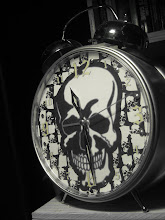
Wheels proved to be a real challenge, taking almost two weeks to complete. First of all, they were mighty rusty. On the outside they didn't look too bad, but inside, right under rim tape, reigned the formations of rust almost millimeters thick. It stuck to the tape as well, so cleaning it took a while (yes, I reused it. Didn't have the right size on hands to replace, plus there is nothing wrong with it). Structurally, wheels were in pretty bad shape as well; some spokes were way too loose, some too tight, the rims (steel, heavy and shiny) somewhat bent; spokes and nipples were rusty and stuck (some had to be cut out). Bottom line, the wheels were to rebuild. The hubs, despite some rust were in reasonably good condition. New spokes, that cost about $30, ended up being the biggest investment in this project (total cost is probably about $60). This was my first wheel building job, and taking in consideration the condition of the rims I'm somewhat proud of it. The tension never worked out right - it is way uneven; this was the only way to get the wheels trued. This will probably require some touch up truing later, but I doubt I could do any better at the moment.
Finally, all that could be cleaned is clean, wheels are built, and it's time to put the whole thing back together. Brakes, derailer, levers and the shifter all go on nicely; cables and housing are measured, cut, and snugly routed in between the lateral stays. Zip-ties as the means of attaching cables to the frame have certain advantages - they allow you to pass the cables anywhere you want, and eliminate brazed stays, thus making the frame a singlespeed (i.e. coaster brake or fixie) friendly.
There is only one part missing to make the bicycle ridable - the chain. Knowing that I have a few lying around I didn't even think of picking up a new one. The catch - they are all too short, being used on singlespeeds previously. Since finding a new chain at 1 am is out of the question, this finishing touch, along with the derailer adjustment will have to wait till tomorrow.
This doesn't prevent however, putting on all the "decorative" stuff - reflectors and the horn, that is the best thing ever appearing in the Canadian Tire bike department. Infernally loud and shiny, I've been looking for an appropriate project to put it on for a while, and here is the opportunity!

It actually looks quite in place where it is, making a nice complementary to the "vintage" shifter.

 Finished! The chain is in place (since there is only one chainring it had to be made 2 full links longer than the usual large chainwheel/large sprocket combo, and could probably even be fine with one more link); minor derailer adjustment, and off for the test run!
Finished! The chain is in place (since there is only one chainring it had to be made 2 full links longer than the usual large chainwheel/large sprocket combo, and could probably even be fine with one more link); minor derailer adjustment, and off for the test run!






